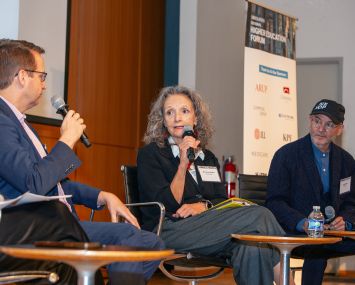Presented By: Nuveen Green Capital
How C-PACE Financing Can Help Offset Costly Economic Conditions
By Nuveen Green Capital June 6, 2022 7:00 am
reprints
At a time when developers are facing a seemingly endless array of increasing economic challenges — including inflation and deepening supply-chain issues, to name just a few — any tool that eases the burden could be considered crucial. Developers are turning to C-PACE (Commercial Property Assessed Clean Energy) financing, which allows them to lighten the financial load while doing good for the environment. Partner Insights spoke to Andrew Zech, COO of Nuveen Green Capital – a leading C-PACE capital provider — to discuss the advantages of C-PACE financing for developers, and how it can help stave off the worst effects of a challenging economy.
Commercial Observer: What exactly is C-PACE financing, and who is C-PACE financing available to?
Andrew Zech: C-PACE is an innovative financing tool that’s spreading rapidly across the United States. It allows commercial developers and property owners to finance a portion of their construction project through a public/private structure that’s cheaper and more competitively structured than standard construction loans, mezzanine financing, or third-party equity. It’s accessible to any major commercial construction or renovation project in the 30-plus states where C-PACE financing is available.
What is the greatest advantage of C-PACE financing in these times of economic volatility?
C-PACE is compelling in 2022 for a few different reasons. One is that the rate is low, and it’s fixed from construction to term. It’s hard to overstate the importance of locking in a competitive rate when rates are rising as rapidly as they are. C-PACE is also critical because it tends to size down more expensive construction loans, mezz debt, third-party equity or other gap fillers. And so the argument for C-PACE used to be that it could shrink your dependence on double-digit interest-rate gap financing, and that’s certainly true. But increasingly, C-PACE is even priced inside of first mortgage debt. So for a lot of projects, it’s the most competitive form of capital of any kind in a construction project’s capital stack.
Should today’s precarious economic situation be an incentive for developers to find ways to put C-PACE to use?
Yes, absolutely. We’re seeing a challenging confluence of increasing construction costs and financing costs, supply-chain issues that are driving up costs, and the economic uncertainty of what’s going to meet you on the other side of your construction project. All of those are coming together with a wave of developments that no longer pencil with traditional financing. When you’re in a climate like that, any tool that can dramatically cut costs should be on every developer’s menu.
Interest rates are rising. How much of the pain of rising rates can C-PACE offset for developers of both adaptive reuse conversions and new construction?
Since the beginning of the year, the 10-year Treasury has increased by 130 basis points, and SOFR is basically right behind it. For your typical capital stack, C-PACE comes in and decreases the weighted cost of capital by 100 to 200 basis points. So, in a lot of ways, I think about C-PACE like turning back the clock to the financing cost of 2021.
How will the long-term value of a property be affected, especially against factors like inflation, by having used C-PACE financing?
C-PACE is unique in that it can automatically transfer to a property’s next owner upon sale, or the current owner can choose to pay off C-PACE before the sale, or refinance. That’s always been a great free option for developers, but now that free option is even more powerful because in a higher-rate environment, having a captive source of 5 to 6 percent long-term, nonrecourse financing with no fees, no financial covenants, no assumption, and no requirements is very likely going to boost the property value on sale.
Will the upgraded energy-efficient measures developers use C-PACE for have a long-term effect on a building’s value?
Absolutely. C-PACE is used on buildings that have environmental attributes that exceed code standards. Buildings that are more comfortable and environmentally friendly are also more valuable and more sought after in the market. Study after study has confirmed this.
Are there any steps Nuveen Green Capital is taking to help protect their borrowers from all the worsening economic conditions we’ve been discussing?
Yes. Nuveen Green Capital can work with our borrowers to structure the form of the financing to hedge against future volatility. The core structure of C-PACE already helps, because it is long-term, fixed-rate and nonrecourse, which is incredibly important to developers, especially in these financial conditions. But we can also work with developers to structure their rate, fee and terms on the project to best meet their needs.
Some of Nuveen Green Capital’s leaders were involved in developing C-PACE financing. Given this, was C-PACE designed, at least in part, with protection from a worsening economy in mind?
Yes, for sure. When C-PACE was first developed, the great financial crisis wasn’t too far in the rearview mirror. It was critical when designing a big-tent financing program for energy efficiency to make sure that it was designed with future volatility in mind. So a lot of the attributes that I’m describing with C-PACE — that it’s long-term, fixed-rate and nonrecourse, and the ability to transfer on sale — aren’t there by accident. They were intentional.
Should every developer be aware of C-PACE financing, or is it really just for developers in certain situations?
I like to joke with our clients that C-PACE is a great fit for anybody who has a major capital project and a cost of equity that is greater than 6 percent. When you actually look at the market, that is nearly every single development out there.



